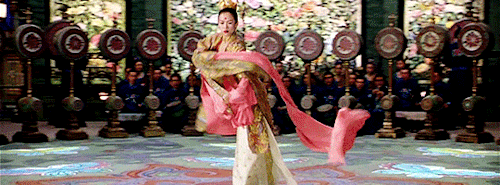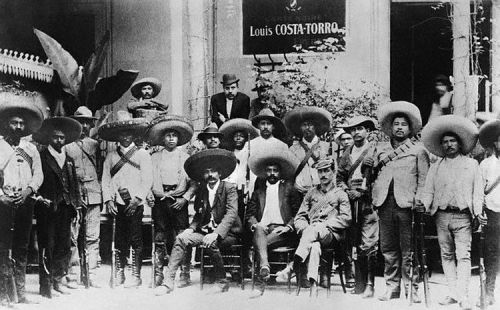186 posts
Latest Posts by fernandoalbertorodriguez - Page 4


Tweet





Bien interesante lo que dice Obama…
ARMI http://ift.tt/29kePZR




Para quienes creen que no se aprende de la historia; este es un castigo de la vieja usanza mexica :p








Arte por Charles Glaubitz








Ehécatl, deidad del viento, manifestación de Quetzalcoatl, la serpiente emplumada, tomando el nombre de Ehécatl-Quetzalcoatl, apareciendo en el aliento de los seres vivos y en las brisas que traen las nubes con lluvia para los sembradíos.
Su aliento inicia el movimiento del Sol, anuncia y hace a un lado a la lluvia. Trae vida a lo que está inerte.


Emiliano Zapata and his men, 1914


May 15, 1911: The revolutionary forces of Francisco Madero massacre over 300 Chinese residents of Torreón, Mexico.
In late 1910, with defeated Mexican presidential candidate Francisco Madero at its head, a diverse coalition launched what would unravel into the decade-long Mexican Revolution. Its fundamental consensus was that the regime of President Porfirio Díaz, which represented the dregs of colonial legacy, elitist Europeanism, and foreign collusion over the interests of Mexico, must be deposed.
Underlying these basic grievances was the even more fundamental, yet infinitely more complex, question of what the new Mexican nation should be. The thirty-four year-long Porfiriato dictated its national and social aims based on a strict positivist vision of progress, privileging all that was European and modernization in the image of the European. The questions facing those who now sought to overthrow Díaz were therefore charged with issues of race, xenophobia, and lo mexicano and mexicanidad. As the new revolutionary Mexico emerged - a nationalist Mexico, which now embraced the ordinary middle and lower classes and Mexico’s indigenous populations over the European-aligned upper classes - fissures elsewhere fractured violently open.
Some 10,000 to 40,000 Chinese resided in Mexico by 1910. President Díaz had hitherto welcomed enthusiastically both foreign capital and the foreign cheap labor provided by this stream of Chinese migrants. As was the pattern across the Americas, the Chinese lived and labored in mostly isolated cultural enclaves. At the same time, many Chinese workers managed to accumulate some capital and open businesses both large and small. By the time of the Mexican Revolution, a strong anti-foreign sentiment - directed at not only Americans but Asians who, like the Americans, appeared to be profiting and thriving at the expense of ordinary Mexicans - was clearly brewing.
Between May 13 to May 15, as Díaz’s exit became imminent, maderista troops took the northern city of Torreón, and in the process massacred an estimated 303 Chinese in addition to 5 Japanese residents who became conflated with the Chinese population. Lebbeus R. Wilfley described in his investigations of the massacre that “soldiers shot them as they would rabbits for sport and for practice in marksmanship,“ and then after the “carnival of slaughter ended [the soldiers] … robbed the dead.” A mob of over 4,000 civilians accompanied the soldiers and, incited by calls to “exterminate” this alien population of exploiters and profiteers, attacked Chinese businesses and slaughtered indiscriminately, despite some individual efforts by civilians to protect them.
The massacre ended by order of Emilio Madero, who then placed survivors under military protection, but the sentiment remained. While the scale of violence that took place at Torreón was never repeated, attacks against Chinese property and individuals continued through the revolution. In the years following, calls for exclusion or expulsion escalated, and the Chinese government, itself confronting foreign encroachment across the Pacific, could do very little to protect its overseas nationals.


PEOPLE OF THE ANCIENT WORLD: Dido (Queen of Tyre/Founder of Carthage)
QUEEN Dido (aka Elissa, from Elisha, or Alashiya, her Phoenician name) was a legendary Queen of Tyre in Phoenicia who was forced to flee the city with a loyal band of followers.
Sailing west across the Mediterranean she founded the city of Carthage c. 813 BCE and later fell in love with the Trojan hero and founder of the Roman people Aeneas. The tale of Dido is most famously recounted in Virgil’s Aeneid but she appeared in the works of many other ancient writers both before and after.
Read More
Article by Mark Cartwright on AHE

Participando en un maratón en Cánada, con EPN
#LadyReportera
ARMI http://ift.tt/294Pr9W

Consejo memexicanisimo del día:
ARMI http://ift.tt/293G9NV

Cualquier parecido con la realidad es pura coincidencia…
ARMI http://ift.tt/297J5HC

EPN triunfando en Canadá… *Aplausos*
ARMI http://ift.tt/299t1E6

Amor…
ARMI http://ift.tt/29keHJP

Legarreta dice que no nos afecta…
ARMI http://ift.tt/299y0bW

Obvio lo invitaron al after…
ARMI http://ift.tt/29keOVJ

Bien interesante lo que dice Obama…
ARMI http://ift.tt/29kePZR

Ups…
ARMI http://ift.tt/299y9w7


CON TESTIGO CLAVE, VINCULAN A IMPUTADOS POR EL HOMICIDIO DE DIANA MÍA
Diana “N” y Efrén “N”, madre y el padrastro de la pequeña Diana Mía de cuyo asesinato son presuntos responsables, fueron vinculados a proceso durante audiencia celebrada el día de hoy, en la que además se logró que el Juez de Garantía, concediera a la fiscalía 6 meses para el cierre de la investigación.
Las investigaciones realizadas por agentes del grupo de homicidios violentos y derivado de diversas pruebas periciales, así como la presentación de un testigo clave, se pudo establecer la posible responsabilidad de los imputados los posibles responsables de los hechos bajo los delitos de feminicidio y violación impropia.
Un testigo clave es un amigo de Efrén quien declaró ya que se vio forzado a ayudarlo para ir a tirar un “bulto” al canal, luego a los días cuando fue localizado el cadáver de la niña se dio cuenta de lo que habían hecho y se aterró. Se dijo que este hombre es testigo voluntario de los hechos.
En la celebración de la audiencia el juez a cargo argumento que en base a los testimonios recabados la menor estuvo expuesta a un alto grado de vulnerabilidad y en condiciones de abandono y descuido por parte de la madre.


PLACES IN THE ANCIENT WORLD: Cuicuilco (Mexico)
CUICUILCO is an ancient settlement site in central Mexico, now located in southern Mexico City. Prominent in the late pre-Classic period, around 500 BCE, it is noted for its large circular temple mound, one of the earliest monumental structures in ancient Mesoamerica and influential on many later pyramid monuments built by the Maya and Aztecs amongst others. Buried in several metres of lava and abandoned Cuicuilco remains one of the most enigmatic early urban centres in the Americas.
Cuicuilco was inhabited just at the period when Mesoamerican villages were transforming into larger population centres which would in turn become the great cities of the region in later centuries. At its height the town may have had a population of up to 20,000 people, its prosperity based on the fertile land in the surrounding lagoon basin of the Mexico Valley.
Read More
Article by Mark Cartwright on AHE

Aquí se aprecia claramente a Peña con sus cuates…
Los envidiosos antiPRI dirán que es fotochop…
ARMI http://ift.tt/29iq5s7

“La educación…es el principio en el que descansan la libertad y el engrandecimiento de los pueblos”
Benito Juárez